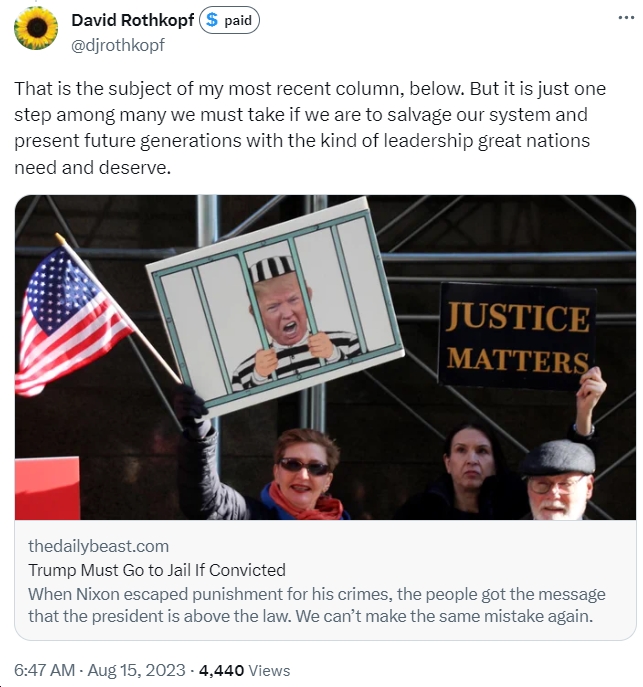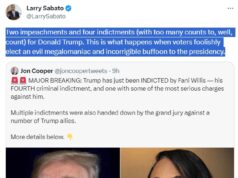See below for an excellent analysis by Charlottesville City Council member Lloyd Snook of how VA05 Democratic nominee Cameron Webb might win the district in November. Also note that it’s still possible Republican nominee Bob Good won’t make the ballot, and will be forced to run a write-in campaign. And…it’s still possible that Rep. Denver Riggleman (R-VA05) will run as an independent. So, there are a number of possibilities here…stay tuned. Oh, and check out yesterday’s poll, which finds Webb trailing Good by just two points (43%-41%) in this R+6 “PVI” district.
A few late-night thoughts from looking at election returns from the 5th District primary…
First, a methodology issue. I am going to define the universe of Democratic voters in terms of those who voted for Clinton in 2016 and Obama in 2012. Hillary got about 155,000 votes in the Fifth in 2016; Obama got about 164,000 notes in the Fifth in 2012. With population increases, it is probably reasonable to think that an Obama-like campaign would bring in about 173,000 votes. Leslie Cockburn got 145,040 votes in an off-year election in 2018 (47%). In 2016, about 368,000 votes were cast. My guess is that a reasonable “win” number for 2020 is about 195,000, or about 18,000 votes that need to be found this year that might not always be there..
The Fifth District is basically 4 separate districts:
a. Charlottesville-Albemarle and surrounding counties;
b. Lynchburg-to-Danville (Pittsylvania, Franklin, Bedford, Appomattox, and Campbell Counties);
c. The many smaller rural counties around the edges — Brunswick, Halifax, Henry, Charlotte, etc.; and
d. Fauquier, a blend of a bedroom community to NoVA and a farming county.
The Charlottesville-Albemarle area is very Democratic, with a well-organized Democratic Party that always benefits from being a focus of a coordinated campaign. It is hard to see how many more votes can be squeezed out of this area than the 85% that Cockburn received in Charlottesville, or the 65% that she got in 2018, but if those percentages can be realized out of the higher turnout in a Presidential year, that will mean 3,500 more votes.
The Lynchburg-to-Danville axis is ferociously Republican, and it regularly goes for the Republican candidate by a 75-25 margin. If Cam Webb can lose those counties only 65-35, it will mean that he has picked up about 12,000 votes.
The rural counties are hard to be organize for Democrats — they often have Democratic committees that are messed up. But there are probably another 1,000 votes that a maximal effort could win.
Fauquier County went for Denver Riggleman by about 4,000 votes over Leslie Cockburn. The part of Fauquier that is in the Fifth District is pretty rural, but a good effort there could cut that margin in half.
Doing this kind of guess-timating gets me to about 192,000 votes, or within spitting distance of a win number. In other words, the District still leans Republican, but it is winnable for Cam Webb.
One point to make about the primary — it was basically fought in the Charlottesville TV market. Turnout in Charlottesville, Albemarle, Rappahannock, Greene, Nelson and Fluvanna was over 40% of the Clinton vote; in other parts of the District, the primary turnout was around 25% of that 2016 Democratic vote. Primary turnout was low in places like Prince Edward and Brunswick Counties — the farther away from Charlottesville, the lower the turnout.
That means, as a practical matter, that Webb is not well known in the rural counties or in the areas around Lynchburg. Like all Charlottesville candidates, he will need to spend a lot of time and effort to make an impact in Southside Virginia.
In 2008, people asked me, “Can Tom Perriello win?” And I answered (prophetically) that “He may not be the first candidate across the line on Election Night, but with some luck and a lot of hard work, he could be the last.” And “Landslide Tom” won by 728 votes, after the recount.
Let’s hope for a replay in 2020!














